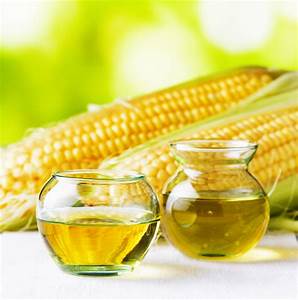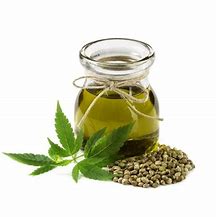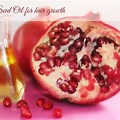Corn Oil
-





-
Corn Oil
- Latin Name: zea mays
- family: Graminae, Poaceae
- Etymology
Also known as Indian corn, maize. Zea is the Greek name for a related plant and mays is from the Mexican.
The Plant and its environment
Corn or maize, which can grow to a height of about 4 meters (12 feet) is native to the Central Americas and was used by the Aztecs, the Incas and the Mayans, who worshipped the plant. No wild maize has ever been discovered and it is assumed that our present day plants are hybrids dating back to pre-history. It was one of the plants brought back to Europe by the modern discoverer of America, Christopher Colombus. Once established in Europe it was not long before this nutritious plant spread to Africa and the East.
The Oil
Pure corn germ oil is a clear light yellow and stores well as its height in vitamin E content (0.6%) helps to prevent oxidation. It is a semi drying oil.
Method of Extraction
Corn is usually extracted from the corn germ by means of steaming, bleaching and recoloring that this oil is not generally favoured for use in aromatherapy . Cold pressed oil is not available, and there is only 6% oil in the embryo.
Principal Constituents
Corn oils consists predominantly of unsaturated fatty acids (around 65%-80%) comprising about 58% linoleic acid and 1.5% alpha-linolenic acid, oleic and arachidic ac ids, helping us to assimilate fat when used in cooking : the saturated palmitic and stearic fatty acids are present only in small quantities. It is a source of omega 6 fatty acids.
| Type | Based On | Content - 5 |
| saturated fatty acids | ||
| C12:0 | lauric acid | <0.3 |
| C14:0 | myristic acid | <0.3 |
| C16:0 | palmitic acid | 9.0 - 4.0 |
| C18:0 | stearic acid | 0.5 - 4.0 |
| C20:0 | arachidic acid | <1.0 |
| C22:0 | behenic acid | <0.5 |
| C24:0 | lignoceric acid | <0.5 |
| Total saturated fatty acid content | 14 | |
| Monounsaturated fatty acid content | ||
| C16:1 | palmitoleic acid | <0.5 |
| C18:1 | oleic acid | 24 -42 |
| Total monounsaturated fatty acid content | 28 | |
| Polunsaturated fatty acids | ||
| C18:2 | linolenic acid | 34 - 62 |
| C18:3 | alpha linolenic acid | <2.0 |
| Total polyunsaturated fatty acid content | 58 |
Physical Properties
| Acid value (mg KOH/g oil) | 0.2 max. |
| Peroxide value (meq/k oil) | 2.0 max. |
| Refractive index at 40C | 1.4640-1.4690 |
| Colour (Lovibond 5.25" cell) | 2.5 red max. |
| Iodine value (wijs) | 103-131 |
| Saponification value | 187-193 |
| Unsaponifiable matter (%) | 2.0 max. |
| Specific gravity at 25C | 0.915-0.920 |
| Energy value Kcal/100ml | 901 |
- Vitamin and Mineral Content
The oil contains the vitamins A, B1, B2, C and E. The corn kernel germ surpasses wheatgerm with respect to its content of vitamin E, iron, zinc, and fiber. It is also a good source of potassium, magnesium and copper- .
- Therapeutic Properties - internal use
A tablespoonful (15 ml) of this oil taken at meal times is reported to help such ailments as asthma, eczema, hay fever and migraine.-
Cosmetic Uses
-
Corn oil is used mainly in emollient creams and toothpastes. -
Culinary Uses -
Cheap and plentiful, this widely used cooking oil is produced on a large scale by the makers of corn flakes, corn flour and glucose. Used in margarine, chocolates, cheese spreads, and biscuits. -
Reference: Carrier Oils for Aromatherapy and Massage: Len Price with Ian Smith and Shirley Price
Articles-Most Read
- Home
- Contact Us
- Coconut Oil-2
- Absorption Ratings for Carrier Oils
- Cold Pressing Method
- What are Essential Fatty Acids
- Cherry Kernel Oil
- Fixed Oils and Skin Penetration
- Hempseed Oil
- Almond Oil
- Cocoa butter
- Camelina Oil
- Coconut Oil
- Antibacterial Effects Of Carrier Oil
- Lime Blossom Oil (macerated)
- Carrot Oil, Wild Carrot Oil (macerated)
- Apricot Kernel Oil
- Kukui Nut Oil
- Jojoba Wax
- Pumkin Seed Oil - Cucurbita maxima, C. pepo
- Passion Flower OIl (Macerated)
- Hydrocotyle Oil (macerated)
- Rapeseed Oil - Carrier Oil
- Palm Kernel Oil
- Nutrients
Who's On Line
We have 151 guests and no members online
Articles-Latest
- How to Make Homemade Olive Oil: A Step-by-Step Guide
- 20 Evidence-Based Aloe Vera Oil Benefits For Skin, Hair & Health
- Peanut oil - Cold pressed - Are There Health Benefits? How To Make
- What Are the Health Benefits of Black Seed Oil?
- Comfrey oil Infused
- Chamomile Flowers Infused Oil
- Calendula Flowers Infused Oil
- Arnica Flowers Infused Oil
- How To Make Herb-Infused Oils
- DIY avocado oil for healthy skin
- How To Make Coconut Oil
- 8 Benefits of Mustard Oil, Plus How to Use It
- SHOREA STENOPTERA SEED BUTTER
- Shea Butter- 7 Amazing Benefits Of Shea Butter
- Monoi Oil For Hair & Skin
- Mango Seed Oil
- Cohune Oil Is The Next Big Thing
- Brazil Nut OIl
- 7 Impressive Benefits Of Allspice
- Camelina Oil Benefits, Uses, and Side Effects




